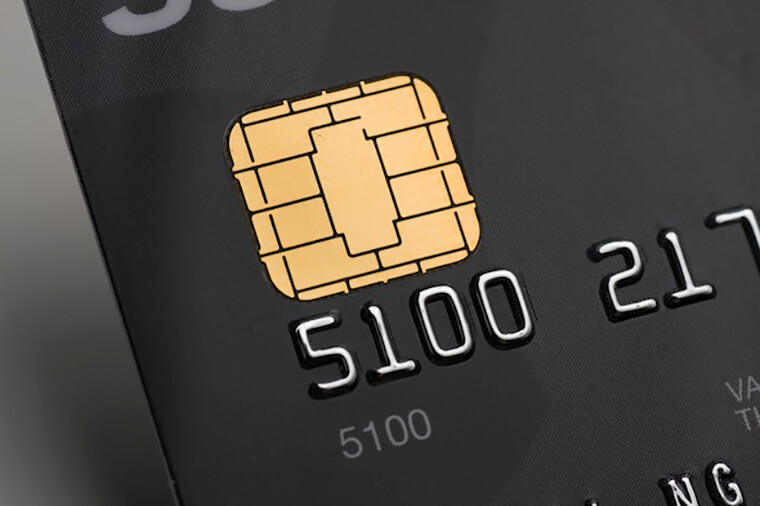
What is EMV?
EMV stands for Europay, MasterCard and Visa, the companies who created this standard to reduce fraud resulting from counterfeit, lost or stolen cards. It is important to note EMV alone doesn’t make payments secure; it’s solely designed to make transactions secure.
“After France migrated to EMV in 2005, counterfeit card fraud dropped by 91%, and the UK saw overall card fraud reduce by one third.1”
How does it work?
All US Credit Card companies are driving retailers to be EMV by distributing Chip & Pin cards. Today, most retailers have magnetic stripe card readers and this will require a change to new EMV card readers. Retailers who do not deploy EMV Chip & Pin will shoulder the accountability for fraud.
When will this be in America?
The deadline for the first round of EMV standards is October 2015; in 2016 this standard includes ATMs for MasterCard and in 2017 this includes Visa cards and automated fuel dispensers. Moving the U.S. payment system to EMV will take some time; Canada began moving to EMV in 2003, yet more than 10 years later only 85% of POS systems take EMV cards.2
Will I need to use a PIN?
The American regulation minimum will be Chip & Signature, not chip & Pin; this requires a cardholder’s signature to authenticate the transaction; while Chip & Pin requires a PIN. Card issuing banks in the US heavily favor Chip & Signature authentication for card-present transactions.
Why hasn’t this been adopted in America?
During the 1990’s European credit card companies could not efficiently detect fraud in addition to the fact that they are responsible for paying for fraud, incentivizing them to switch to EMV. America is one of the last countries to migrate to EMV, which is necessary when half of fraudulent transactions globally occur in the US, even though only a quarter of card transactions occur here.3
The retailer, Target, estimates that about 42 million people4 had their credit or debit information stolen along with estimates that 61 million people4 had their personal data stolen.
What will this transformation cost?
PCATS* expects total costs to be $4 billion to upgrade 800,000 POS systems.5 Which is a third of the amount Americans lose to fraud: global card fraud losses were $11.3 billion, up nearly 15% from the prior year. America accounted for 47%; card issuers lost $3.4 billion and merchants another $1.9 billion.6
Who will this effect?
- Consumers:Cardholders will receive chip cards where they will insert their card for the duration of the transaction, while those using contactless cards will tap or wave their card.
- Credit Card Companies: Card Issuers will provide chip cards and educate employees as well as customers about the cards. Operation costs will go up, as the new cards are expensive. They will also update their payment processing and authentication infrastructures.
- Retailers: Merchants will upgrade and certify their POS terminals to communicate with chip cards. Employees need to be ready to instruct cardholders on how to use their cards and explain the security benefits.
What does the future look like?
The proliferation of mobile payment devices are coming on the heels of the EMV migration. This is because most merchants are moving to EMV compliant readers that also happen to have contactless acceptance.
Today, industry estimates of EMV card conversation rate is over 50% by the end of 2015. Roughly, 75% of credit cards and 40% of debit cards are to be converted to EMV by the fall. Aite Group estimates 59% of terminals will be EMV-enabled by the end of 2015. With smaller banks and merchants lagging, the conversion to EMV cards and POS terminals is expected to take several years. Even though this change may take some time, American consumers can eventually rest assured that their private information stays private.
1. gemalto
2. Convenience Store Decisions
3. USA Today
4. NPR
5. NACS
6. The Economist
*Point of Sales
* Petroleum Convenience Alliance for Technology Standards
Photo Credit: Engadget

Wilson Han is the Director of Business Development for Transportation at Samsung SDS America and has been part of the Samsung family since 2001. Wilson’s specialties include open payment fare systems and payment sectors like EMV, NFC, and PCI. In his spare time, Wilson enjoys hiking and reading a good book.
- Four Big IT Transformations for Enterprise Agility
- An Agile Approach, the Core of Corporate DT for Working Culture Innovation
- Digital ESG, a Critical Success Factor for ESG
- Conversational AI War Begins. Who Will Be the Winner?
- What Is Matter, the New Smart Home Standard?
- 2023 Forecast for Technology Trends